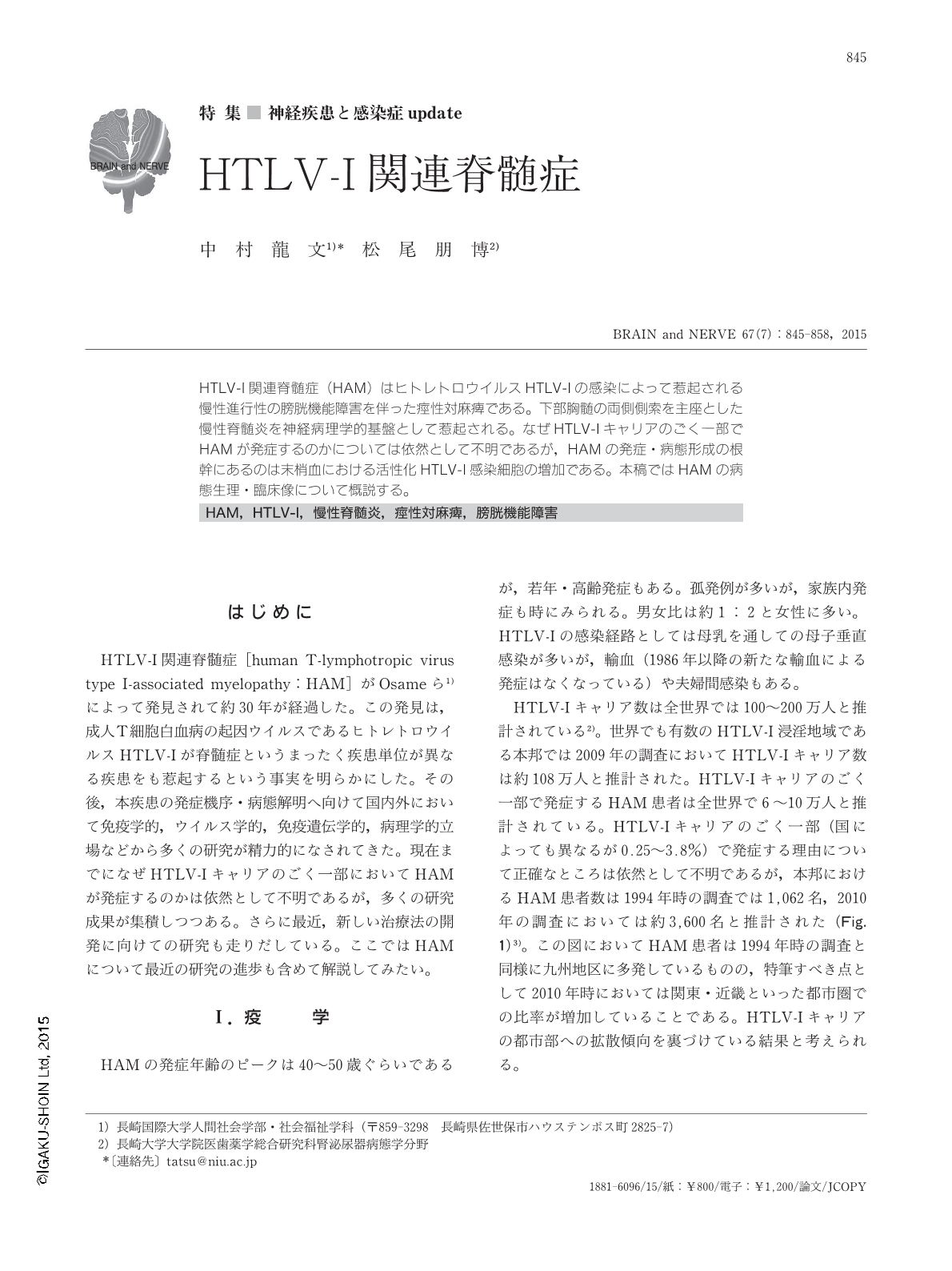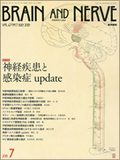Japanese
English
- 有料閲覧
- Abstract 文献概要
- 1ページ目 Look Inside
- 参考文献 Reference
HTLV-I関連脊髄症(HAM)はヒトレトロウイルスHTLV-Iの感染によって惹起される慢性進行性の膀胱機能障害を伴った痙性対麻痺である。下部胸髄の両側側索を主座とした慢性脊髄炎を神経病理学的基盤として惹起される。なぜHTLV-Iキャリアのごく一部でHAMが発症するのかについては依然として不明であるが,HAMの発症・病態形成の根幹にあるのは末梢血における活性化HTLV-I感染細胞の増加である。本稿ではHAMの病態生理・臨床像について概説する。
Abstract
Human T-lymphotropic virus type I (HTLV-I)-associated myelopathy (HAM) is a chronic progressive myelopathy that is characterized by spastic paraparesis with bladder dysfunction that is derived from bilateral pyramidal tract involvement and neurogenic bladder, respectively. The primary neuropathological feature of HAM is chronic inflammation in the spinal cord, mainly the lower thoracic cord, which is characterized by perivascular cuffing and parenchymal infiltration of mononuclear cells. Although it is still unclear why only a very small proportion of HTLV-I carriers develop HAM, the key player in the pathogenesis of HAM is the increase of activated HTLV-I-infected cells in the peripheral blood. The exact cellular and molecular events underlying the induction of chronic inflammation in the spinal cord by HTLV-I are still unclear. However, a long-standing bystander mechanism, such as the destruction of surrounding nervous tissue by the interaction between HTLV-I-infected CD4+ T cells and HTLV-I-specific cytotoxic T cells in the spinal cord, with the cooperation of the positive feedback loop of inflammation that is derived from the migrated HTLV-I-infected cells is probably critical in the immunopathogenesis of HAM. In this review, recent advances in several fields toward the elucidation of the pathomechanisms concomitant with the establishment of new therapeutic strategies in HAM will be discussed along with an overview of the clinical features.

Copyright © 2015, Igaku-Shoin Ltd. All rights reserved.


